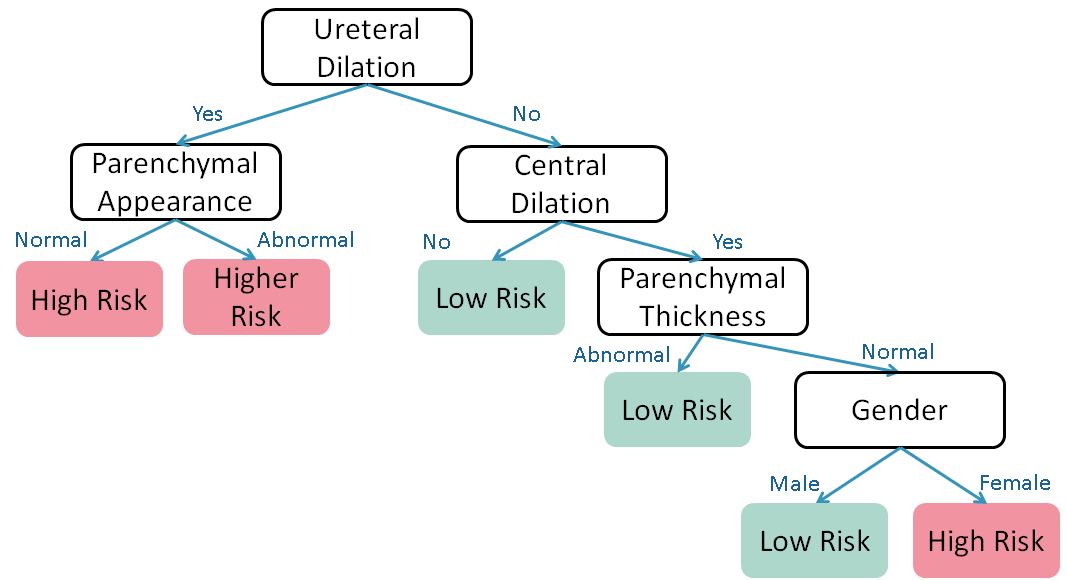Machine Learning Algorithm Predicting High-grade VUR Using Features From UTD Classification In Children With Prenatal Hydronephrosis
Hsin-Hsiao Scott Wang, MD, MPH, MBAn1, Tanya Logvineko, PhD1, Jeanne Chow, MD2, Caleb Nelson, MD, MPH1.
1Department of Urology, Boston Children's Hospital, Boston, MA, USA, 2Department of Radiology, Boston Children's Hospital, Boston, MA, USA.
Background: Urinary Tract Dilation (UTD) classification has been designed to be a more objective grading system to evaluate antenatal and post-natal UTD. Due to unclear association between UTD classifications to specific anomalies such as vesico-ureteral reflux (VUR), management recommendations tend to be subjective. We sought to use machine learning-based techniques to develop a data-driven model to more reliably predict VUR from early post-natal ultrasound parameters.
Methods: Radiology records from single institution were reviewed to identify infants age 0-90 days undergoing early ultrasound for antenatal UTD. The ultrasound images were reviewed by pediatric urologist and pediatric radiologist. Medical records were reviewed to confirm diagnosis of VUR. Primary outcome defined as high grade (greater or equal to Gr3) VUR. Exclusion criteria include major congenital urologic anomalies (bilateral renal agenesis, horseshoe kidney, cross fused ectopica, exstrophy) as well as patients who never had VCUG performed. Data were split into training/validation/testing sets by 2:2:1 ratio. Optimal classification tree (OCT) models were built to predict VUR risk. Machine learning algorithm hyperparameters were tuned by the validation set.
Results: In total, 280 patients (540 renal units) were included in the study (73% male). Mean age at ultrasound was 30 days. 66 renal units were found to have VUR. The final model (Figure 1) included gender, ureteral dilation, parenchymal appearance, parenchymal thickness, and central calyceal dilation. The model predicted high-gradeVUR with AUC at 0.79(0.70-0.85) on the testing set.
Conclusions: By predicting high-grade VUR, our predictive model using machine learning algorithm provides promising performance to facilitate individualized management of children with prenatal hydronephrosis, and identify those in whom VCUG is most likely to be positive. . This would allow more selective use of this test, increasing the yield while also minimizing overutilization. 
Back to 2019 Abstracts




